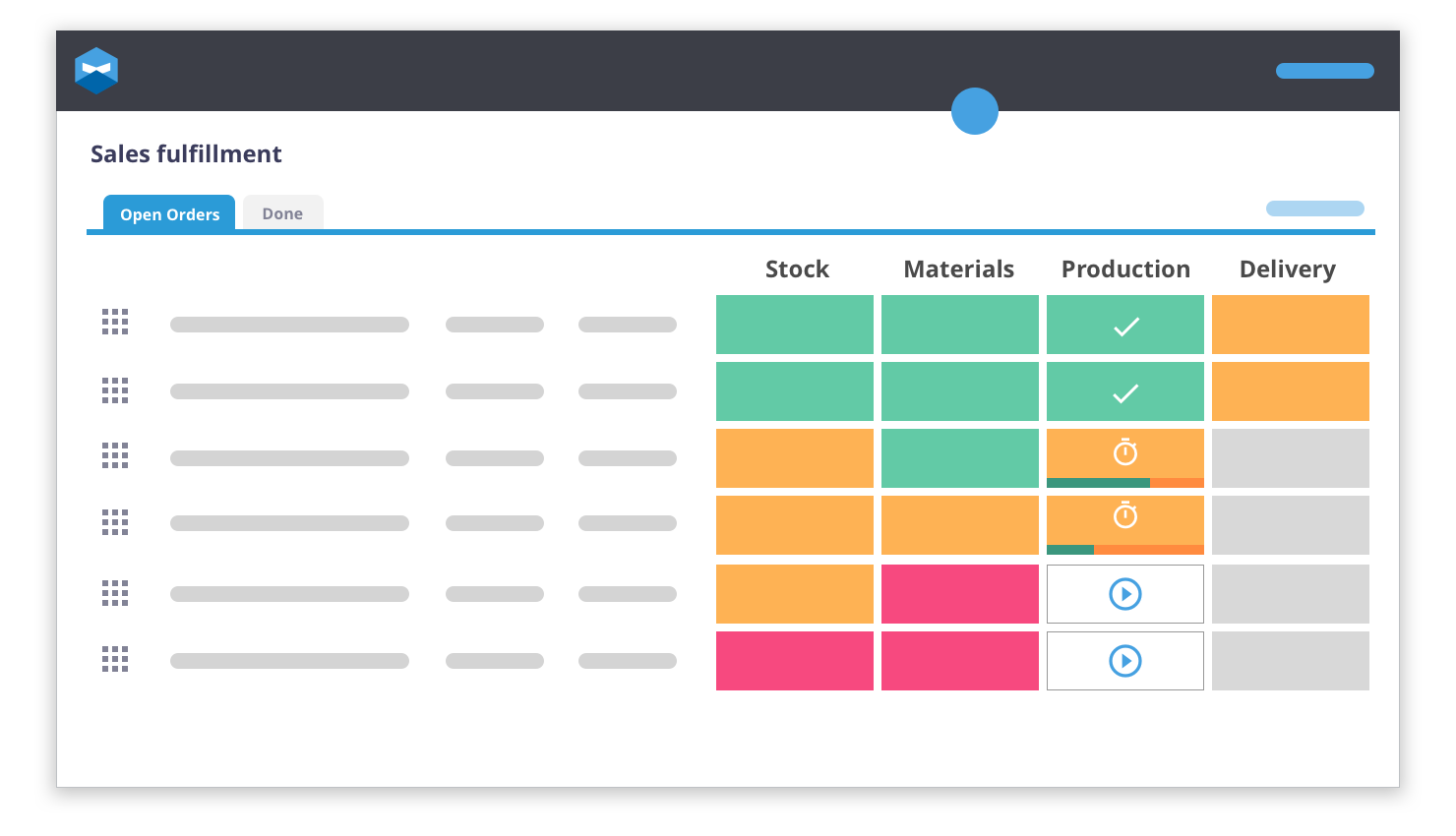8 Ways Direct to Consumer Brands Can Make It Big
Struggling for profitability at scale is common for direct to consumer brands. Here we dive into challenges and solutions available for scaling DTC brands.
Team Katana

Achieving profitability at scale is one of the biggest challenges for modern manufacturers like the guys at “Radis”. That’s why you need to start planning ahead and making sure that you have the tools necessary to tackle them before they arise.
For decades, manufacturers had been stuck going through retailers, wholesalers, and resellers to get their products to mass audiences.
Now though, largely thanks to rising digital technologies and e-commerce, direct to consumer brands can disrupt entire markets without the need for an intermediary to connect them with customers.
The middlemen are in shambles trying to deal with this phenomenon as consumers are drawn closer and closer to manufacturing businesses through the power of the internet.
And it totally makes sense if you think about it.
DTC brands can sell products at a cheaper price, ship it to the customer’s door and directly connect with them through social media and live chat.
In a madly confusing world of endless possibilities, that personal touch can make a huge difference for consumers. And not to mention that customers are as informed as ever about their purchases, whether that be from a quality, purpose or even ethical perspective.
Direct to consumer brands are taking these issues seriously and tackling them with innovative approaches. We’ll soon get to some of these approaches and how you can use them to make your brand stand out.
The real question though is, how can you even find the time to meet customers growing expectations when there’s so much to do!
It can feel like being amongst a hurricane in winter with all the responsibilities falling on your shoulders.
Thankfully, there is a way to calm the storm and do business with a straight head.
In a nutshell, you need to be using cloud inventory software to smoothen the running of your business operations, so that you can focus on your products, marketing, and customers instead.
It really is that simple. Take the pressure off by using software to streamline the daily tasks which take up so much of your day. Inventory management, purchasing, production scheduling, and all that overwhelming headache.
Then you can focus on growing your manufacturing business.
But before we get to that, let’s dig deeper into what it means to be a successful modern direct to consumer brand.
How to Be a Successful Direct to Consumer Brand

Alright, so let’s get things straight.
A direct to consumer brand is a business that makes, markets, sells and delivers their products themselves.
But it has more connotations to it than just that.
Usually, they also create products that solve a problem, with an inspiring story to tell and an environmental awareness that appeals to socially conscious shoppers.
These products can range from everyday items like personalized travel cases and funky underpants to flying insect traps and cat treats subscription boxes.
The range of sectors that have been moving to this model is incredibly vast.
As mentioned though, there are certain elements which remain a consistent thread.
And if you want to become a successful direct to consumer brand then you need to understand what they are, and then take on as many attributes as you can in your own unique way.
Here is a list of attributes you will commonly see:
1. Streamline Manufacturing Business
The most considerable barrier to manufacturers making it big lies in the fact that there are just so many balls to juggle at once. By cutting out the middleman you might have gained the opportunity for greater profits, but don’t forget that it comes at the expense of greater responsibility too.
That’s why growing manufacturers know to use cloud inventory software to combine their daily workflow onto a single dashboard which unifies their DTC business.
By having your inventory, production and sales managed from one place mean that you can leave confusing spreadsheets behind and focus on growing your business. Because ultimately you need to be spending as much energy as you can on your product and customers, rather than constantly putting out fires.
For example, Smart Manufacturing Software will tell you right away if you have materials available to produce for a particular sales order. It makes sure that materials are allocated to each separate manufacturing and sales order so that they never cross over with each other.
This way you know exactly when to purchase materials, and can effortlessly make sure to deliver on time to customers.
The difference the right software can make to your scaling efforts is not to be underestimated.
2. Tell Your Inspiring Story
Steph Korey, co-founder of Away Travel says that “Storytelling is a central part of our marketing. We think about what stories we can feed to the press and to social media – things that make people take notice, things people want to share and talk about”.
And that’s a vital point to note. Because your story is what tugs on your customer’s heartstrings and keeps them invested in your DTC brand.
Worried that you don’t have enough of a story tell?
Rubbish. Just the fact that you’re making and selling products that you love is a valuable narrative in itself. So, take the time to tell it, whether that be on your website or as part of your marketing strategies.
The people demand it.
3. Transparent with Customers
Revealing your business and production practices might seem counter-intuitive to the cynical ones amongst you. But the reality is that consumers today love to see how you do what you do.
So, take the time to explain what you do and how you do it to start building that bond of trust.
And the flip side is that 89% say they will stop buying from businesses that lack transparency. That’s not where you want to be.
4. React Quickly to Customer Needs
The great advantage of cutting the middleman is that you can communicate with customers and understand their needs much faster.
This direct approach will allow you to build an organic and long-lasting relationship with your customers.
Ideally, you want to form channels which can offer an immediate response to a customer, like using live chat for example. And keep in mind that 60% of customers define “immediate” as 10 minutes or less.
5. Produce Valuable Content
Having a great product is one thing, but expectations are moving beyond that now as people look to market experts first when going shopping. If you can show that you care and have a deep passion for your product through your content, then customers will respond well in kind.
Casper is a mattress making company which does this exact thing incredibly well. They set up an online magazine which is dedicated to comfort and wellness, on a separate website to their main shopping channel. The effectiveness comes from the fact that if anything, it keeps these topics at the forefront of people’s minds.
And that’s not to mention the potential created for user-generated content.
6. Smart Use of Social Media
The stats read that around 59% of consumers engage with brands on social media one to three times a day. And that’s a significant slice of pie right there.
But what approach should you take? Well, if you haven’t heard of Glossier then get Googling. Because they are the perfect example of how a totally new direct to consumer brand can use the power of social media to bring their brand to the fore and boost sales with few prior customers.
When Glossier started their beauty manufacturing business they had 13000 Instagram followers before a single product had been sold. By documenting the process and engaging with beauty product enthusiasts they were able to set themselves up for a running start.
Just six weeks after their launch Glossier managed to secure $8.4 million in Series A funding, which they then reinvested in technology to study Instagram and other social media posts.
Goes to show how much value social media can have for a growing DTC brand, simply by engaging thoroughly with potential customers and giving them the content they desire.
7. Create a Personalized Customer Experience
The evolution of technology has meant DTC brands can create brilliant online stores which offer support and pledge to deliver on time. But beyond that is the expectation that you provide a personal connection that shows you care about each individual’s needs.
That could mean customization in the product or even just having a live chat option to answer questions on demand. It’s certainly a trend to take seriously as surveys show that 75% of customers will want to shop with businesses that offer personalized experiences by 2020.
8. Conscious of Environmental and Social Impact
Largely driven by the millennial generation, the emphasis on ethically sourced goods is growing. 73% of younger people are more willing to buy products driven by sustainability alone.
So not only should you take care to source your goods as ethically as you can, but also show your customers that you are doing this too.
Example of Successful DTC Brand
Manufacturers like “Walk With Me” know that they need to be as customer-orientated as possible to stay ahead of the competition. One the hand that means communicating with them directly and the other is making sure they find the time to do so.
So, clearly there is some essence of a formula when growing your direct to consumer brand.
But what better way to get an understanding than a clear example.
Welcome, Walk With Me.
They make awesome leather backpacks, shoulder bags, stationery and accessories suited to fashion and functionality.
A quick look around their website and you will see that all of the above-mentioned points on becoming a successful DTC brand are there.
They tell their story, reveal their processes, limit environmental impact, give tips on product care, whilst keeping the shopping experience as smooth as possible.
And that’s exactly the kind of overall package you need to be aiming for.
Challenges for DTC Brands
Alright, so let’s get real for a second.
It’s not all sunshine and roses when it comes to direct to consumer brands. Because with all the increased potential comes extra responsibility.
No longer can you rely on mass retailers to do your marketing and draw the crowds in. That’s all going to be up to you.
Exciting yes. Easy no.
You have to start juggling your small business inventory management, production, sales, and shipping all at once. And that’s not to mention all your business asides like accounting.
There’s a lot to take on, and frankly, unless you have the tools to help you it can be very easy to get overwhelmed. Especially once your business starts to grow and the responsibilities increase exponentially.
According to the recent report by CommerceNext, 40% of respondents said that the greatest barrier to reaching e-commerce marketing goals this year was achieving profitability at scale.
That was by far the biggest issue faced and it makes sense when you factor in the quick increase of responsibilities that pour in as your business grows.
So, what’s the solution?
Breaking Through as a Direct to Consumer Brand

Katana is an easy to set up software which unifies your order fulfillment process and lets you manage your manufacturing business from a visual, color-coded dashboard. You get an overview of your entire business so that you can focus on growing your DTC brand instead.
It’s clear that there are great benefits to becoming a direct to consumer e-commerce brand. Total control of your brand, the ability to directly communicate with customers, and the opportunity to increase profits by cutting out the middleman are to name a few.
After all, there’s a reason why 55% of customers prefer to buy directly from manufacturers than retailers.
But there is also no doubt that challenges do lie in the face of those that take this ambitious path.
Especially as your business starts to grow and you have to focus more on your product and marketing, with less time to handle operational tasks.
The solution to this lies in Katana Cloud Inventory Software.
Katana is an all-in-one software solution for manufacturing businesses that are looking to scale at their own pace. It helps you handle inventory, production, and sales from a single, visual dashboard.
Here are just some of the key benefits:
- Raw material stock and finished products inventory;
- Easily calculate your manufacturing costs;
- Use as a production scheduling software;
- Sync accounting with your Quickbooks MRP;
- Integrate with Shopify, WooCommerce, and other e-commerce channels;
- Plan your purchasing efficiently;
- Ditch inefficient excel spreadsheets forever; and
- Keep your entire business workflow on a single dashboard.
It’s easy to set up and we are always happy to give you support in getting your workflow rolling.
But the main point here is to focus on the fact that Katana’s purpose is to remove your reliance on inefficient spreadsheets and help run your manufacturing business as smoothly as possible.
Because what you need to make your direct to consumer brand successful more than anything is time.
Time to fine-tune your product, communicate with customers and start really growing your business without getting bogged down in daily tasks.
Team Katana
Table of contents
Get inventory trends, news, and tips every month
Get visibility over your sales and stock
Wave goodbye to uncertainty with Katana Cloud Inventory — AI-powered for total inventory control